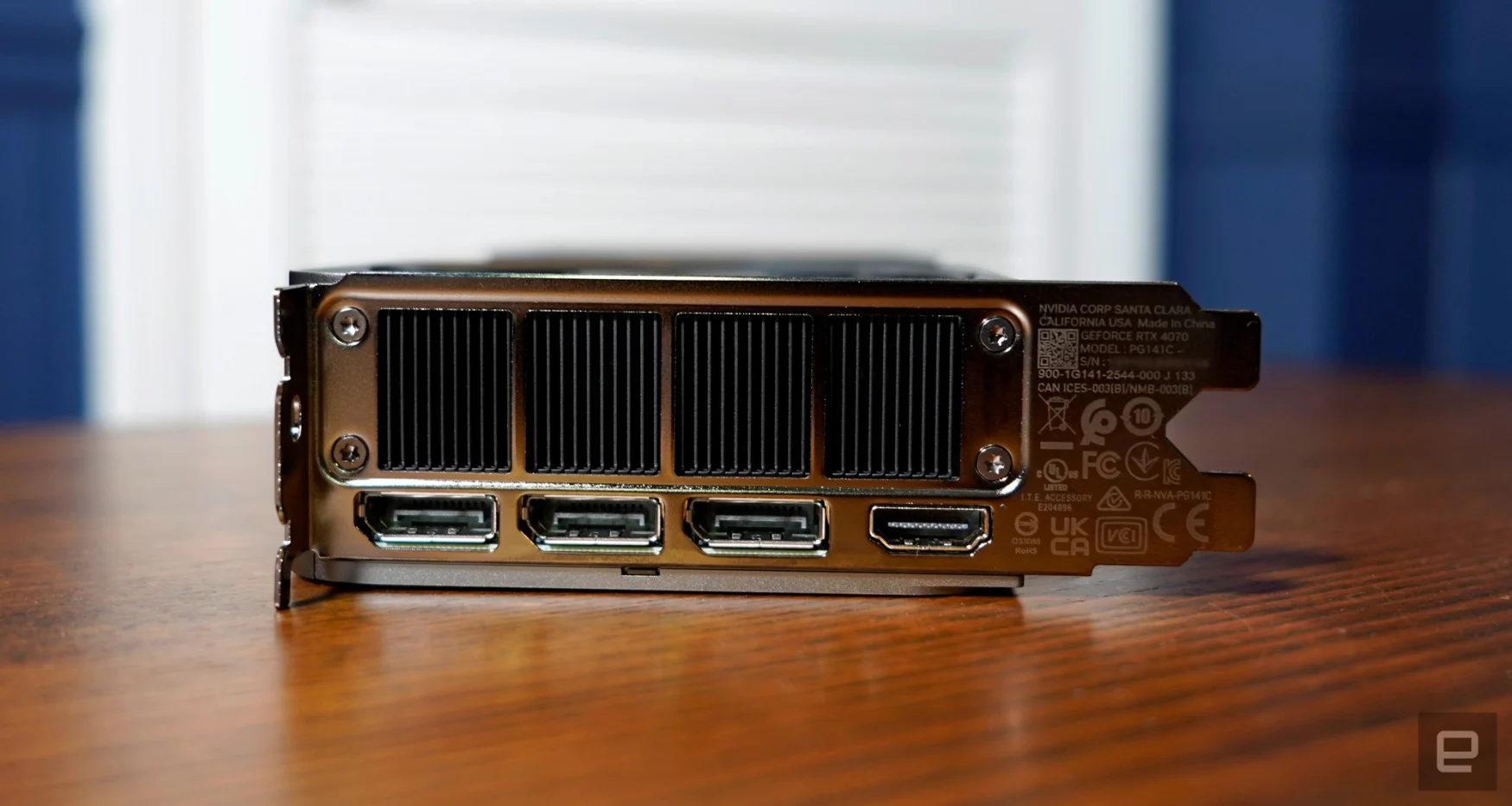NVIDIA RTX 4070 review: The new 1440p gaming leader
Slowly, but surely, NVIDIA is making its 40-series GPUs more affordable. Now it’s down to $599 with the new RTX 4070, a mid-range card focused on 1440p gaming. While it’s $100 more than its predecessor’s launch price, the fabulous RTX 3070, that card typically sold for more than $1,000 due to the supply chain crunch, scalpers and insatiable crypto bros. Based on what we’ve seen from the 4070 Ti, NVIDIA’s new cards are actually staying close to their retail price, which is great news for anyone itching for an upgrade.
Gallery: NVIDIA RTX 4070 | 5 Photos
Gallery: NVIDIA RTX 4070 | 5 Photos
Judging from Valve’s Steam hardware statistics, I’d wager many gamers are waiting on the eventual RTX 4060 before giving up their old cards, especially if it ends up selling closer to $400. But based on my testing, the 4070 is still a solid choice for practical gamers who may wan to splurge a bit. It’s fast enough to deliver excellent 1440p performance with ray tracing enabled, and it can even deliver solid 4K gaming in a pinch too. Even though it’s noticeably slower than the $799 RTX 4070 Ti in most benchmarks, that may not matter much when you’re actually in the heat of battle. (Just think of all you could do with that extra $200!)
NVIDIA RTX 4070
Pros
- Excellent 1440p gaming performance
- DLSS 3 enables better ray tracing performance than before
- AV1 encoding will be useful to streamers
- Quiet and cool
Cons
- Still pricey at $599
- Not every game supports DLSS 3
The RTX 4070 features NVIDIA’s new Ada Lovelace architecture, sporting 5,888 CUDA cores, a base clock speed of 1,920 MHz (boost to 2,475 MHz) and 16GB of GDDR6X RAM. The 3070, meanwhile, had the same amount of CUDA cores, but it was based on NVIDIA’s older Ampere architecture. It could only reach up to 1,725 MHz and had 8GB of slower GDDR6 memory. Despite those differences, the 3070 still holds up well, so I wouldn’t rush out to replace it anytime soon. But if you’re still holding onto an RTX 20-series GPU or something older, the 4070 may be the GPU you’ve been waiting for.

We received the RTX 4070 Founder’s Edition card from NVIDIA, which basically looks like a shrunken down version of the 4080 and 4090. It feels like a premium card, with a sleek metal case, a bevy of heatsink fins and two large fans to deal with heat. It’s also a two-slot GPU, like the 4070 Ti, allowing it to fit inside of smaller cases far better than the enormous 4080 and 4090. Port-wise, there are three DisplayPort connections and a single HDMI. As with all of NVIDIA’s recent cards, it also includes an adapter to connect two 8-pin PCIe power cables (a single PCIe Gen 5 cable will also work).

Subscribe to the Engadget Deals Newsletter
Great deals on consumer electronics delivered straight to your inbox, curated by Engadget’s editorial team. See latest

Please enter a valid email address
Please select a newsletter
By subscribing, you are agreeing to Engadget’s Terms and Privacy Policy.
|
3DMark TimeSpy Extreme |
Port Royal (Ray Tracing) |
Cyberpunk |
Blender |
|
|
NVIDIA RTX 4070 |
8,610 |
11,195/52 fps |
1440p RT DLSS: 120 fps |
6,020 |
|
NVIDIA RTX 4070 Ti |
10,624 |
14,163/66 fps |
1440p RT DLSS : 135 fps |
7,247 |
|
NVIDIA RTX 3070 |
6,226 |
8,032/37 fps |
N/A |
3,500 |
|
AMD Radeon RX 7900 XT |
11,688 |
13,247/61 fps |
1440p FSRT RT: 114 fps |
3,516 |
Once I started benching and playing games with the RTX 4070, it performed just as I expected: Somewhere between the RTX 3080 (which launched at $699) and the 3080 Ti ($1,119). The difference, though, is that it supports NVIDIA’s DLSS 3 technology, which can help speed up ray tracing performance by inserting AI-generated frames. I was particularly impressed by how well it handled Cyberpunk 2077: in 1440p with maxed out graphics and “ultra” ray tracing settings, it delivered a smooth 120 fps. The RTX 3070, in comparison, struggled to hold 75 fps with the same settings using the older DLSS 2, which doesn’t use frame generation.
Control, an older title that only supports DLSS 2, had a less dramatic performance bump with the 4070. While playing in 1440p with maxed graphics and all of its ray tracing settings flipped on, it reached 106 fps, compared to 90 fps with the 3070. Still, it’s a bit of a shock to see a mid-range card scoring triple digit frame rates with all of the game’s ray tracing features enabled (which includes reflections, shadows and debris). Not too long ago, Control used to humble the mightiest video cards.





